Biscoff Cake – The ultimate cake for Biscoff lovers. Two layers of Biscoff sponge (which is made with both crushed Biscoff biscuits and Biscoff spread), sandwiched together with Biscoff buttercream and topped with Biscoff biscuits.
PLUS – How to make this cake in any size of round, square or rectangular tin.
Skip to the recipe | Recipe FAQs | Calculator
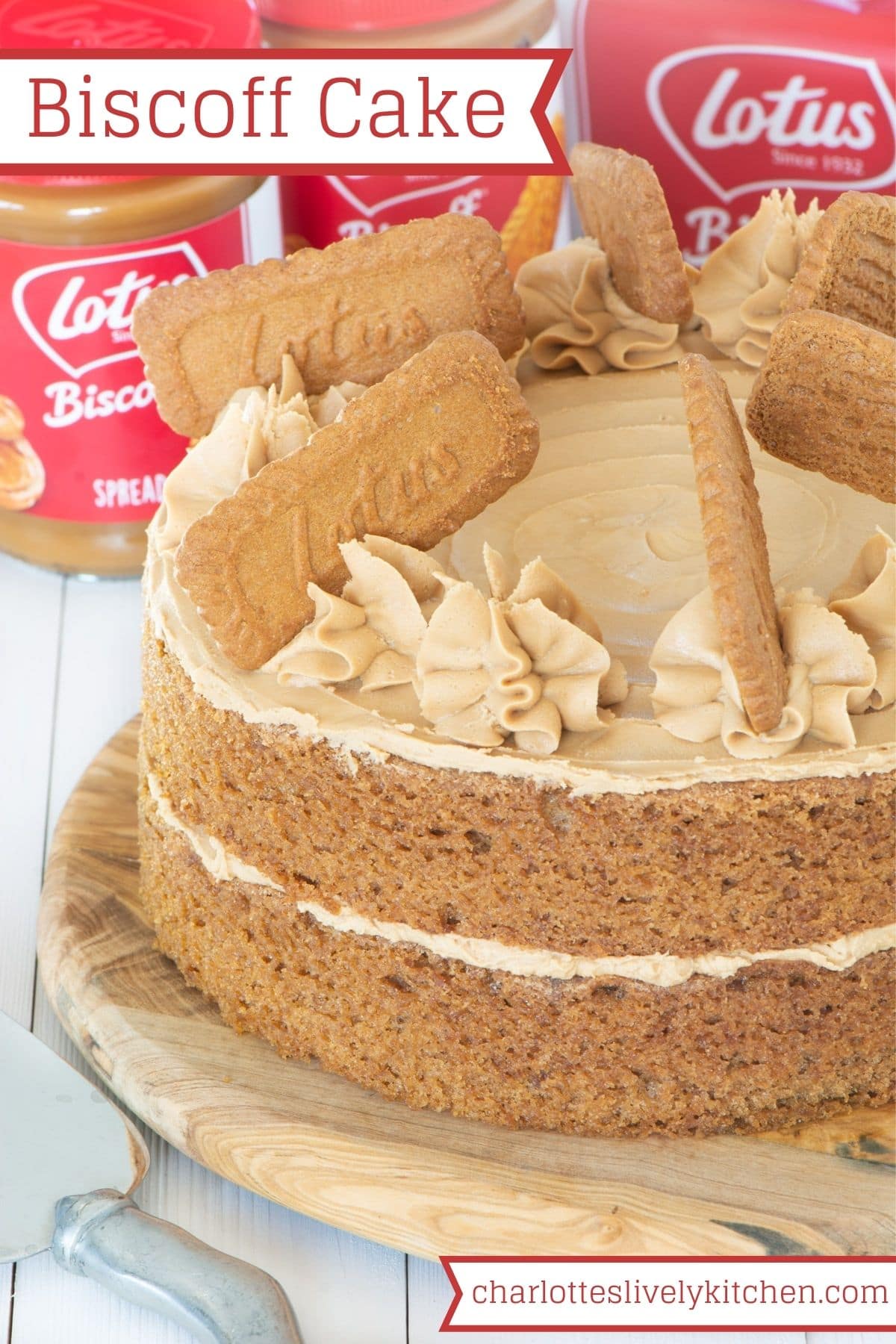
Earlier this year I shared my recipe for Biscoff cupcakes and since then I’ve had lots of requests to adapt the recipe to make a full-size cake, so here it is.
This sponge shares all of the features you love in those cupcakes, it’s light and fluffy and best of all it’s packed full of Biscoff flavour with the Biscoff incorporated four ways. In the sponge, as well as including a generous dollop of Biscoff spread in the mixture, I’ve replaced some of the flour with crushed biscuits (sounds odd, but trust me it works brilliantly). The buttercream also includes plenty of Biscoff spread, and to top it off, the cake is decorated with Lotus Biscoff biscuits.
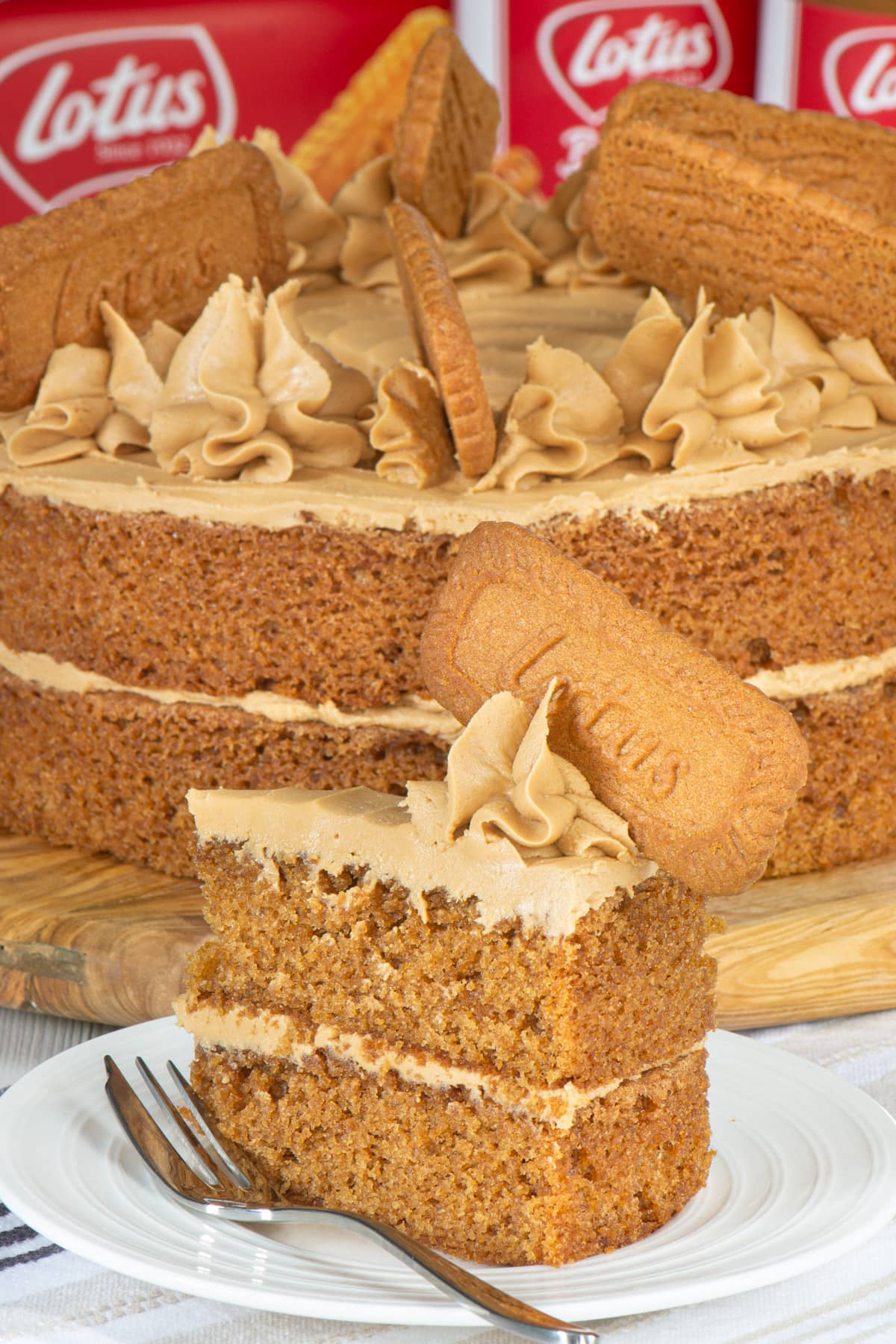
Biscoff Cake FAQs
If it’s your first time making this recipe or you have a question, please take a moment to have a read through my FAQs for some extra tips and allergen information.
- How long does this cake last and how should it be stored?
- Can this cake be made in a different size of tin?
- Can this cake be baked in one deep tin instead of sandwich tins?
- Can this cake be covered in fondant to make a celebration cake?
- Can this cake be used to make tiers?
- What is this recipe free from? Who is it suitable for?
How long does this cake last and how should it be stored?
This Lotus Biscoff cake will last for up to a week after baking and should be stored in an airtight container.
❄️ Suitable for freezing
The cake is suitable for freezing, either just the sponges, or the decorated cake (minus the biscuits on the top).
To freeze the sponges, either place them into an airtight container or wrap them in clingfilm. Defrost them thoroughly before decorating.
To freeze the finished cake, either store it in an airtight container, or place it on a freezer-safe dish in the freezer for a couple of hours. Once the buttercream is firm, wrap it in clingfilm. Remove the clingfilm before defrosting, so that the buttercream remains neat.
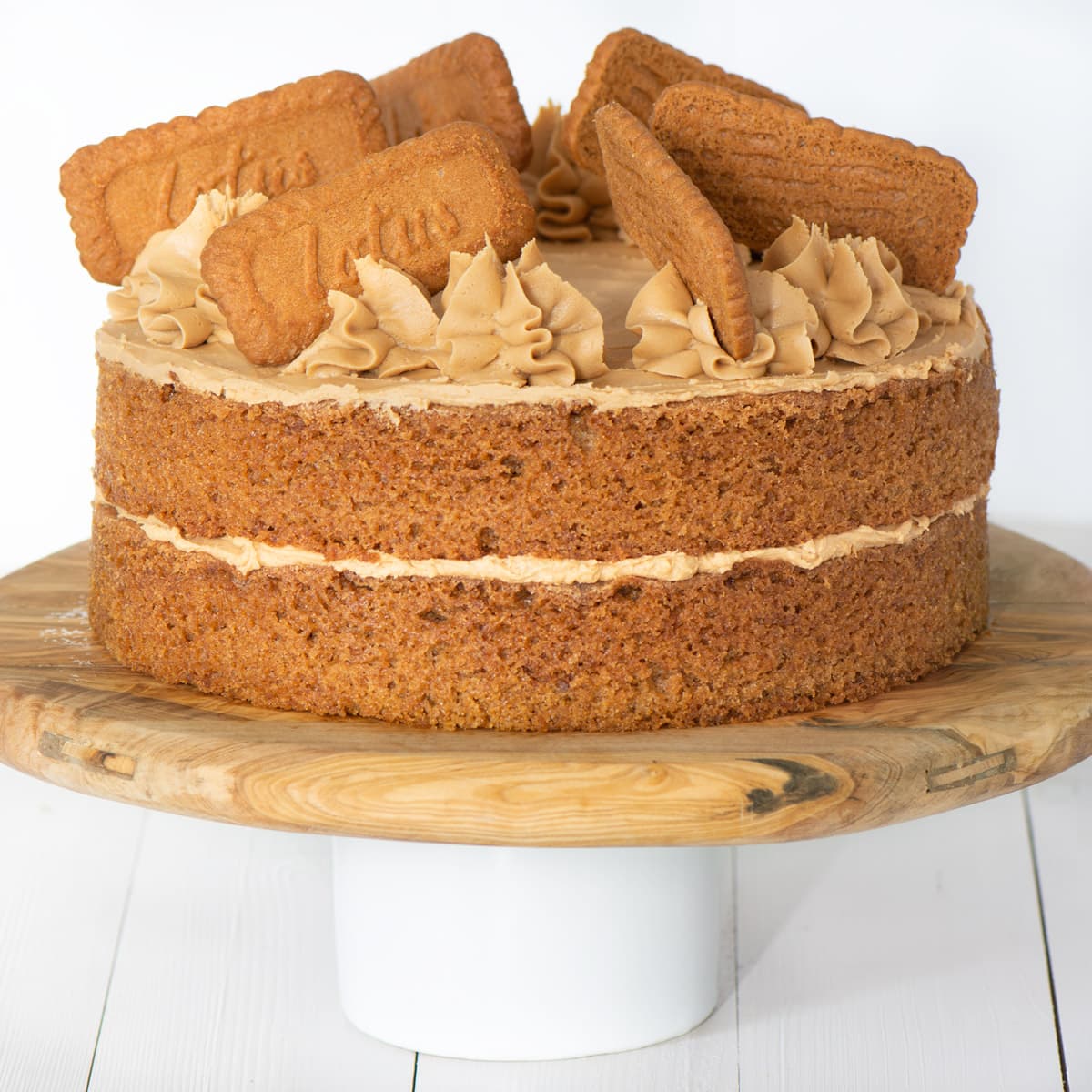
Can this cake be made in a different size of tin?
Yes, if you head down below the recipe, you’ll find my calculator which will tell you the ingredients you need for different tin sizes.
Can this cake be baked in one deep tin instead of sandwich tins?
You can, but it’s not something I recommend.
I find this cake consistently gets great results when baked in sandwich tins. However, when it is made in a deep tin, it sometimes doesn’t cook evenly in the centre leading it to sink after baking.
If you do decide to attempt the cake in a deep tin then you’ll need to increase the cooking time to c. 50 minutes.
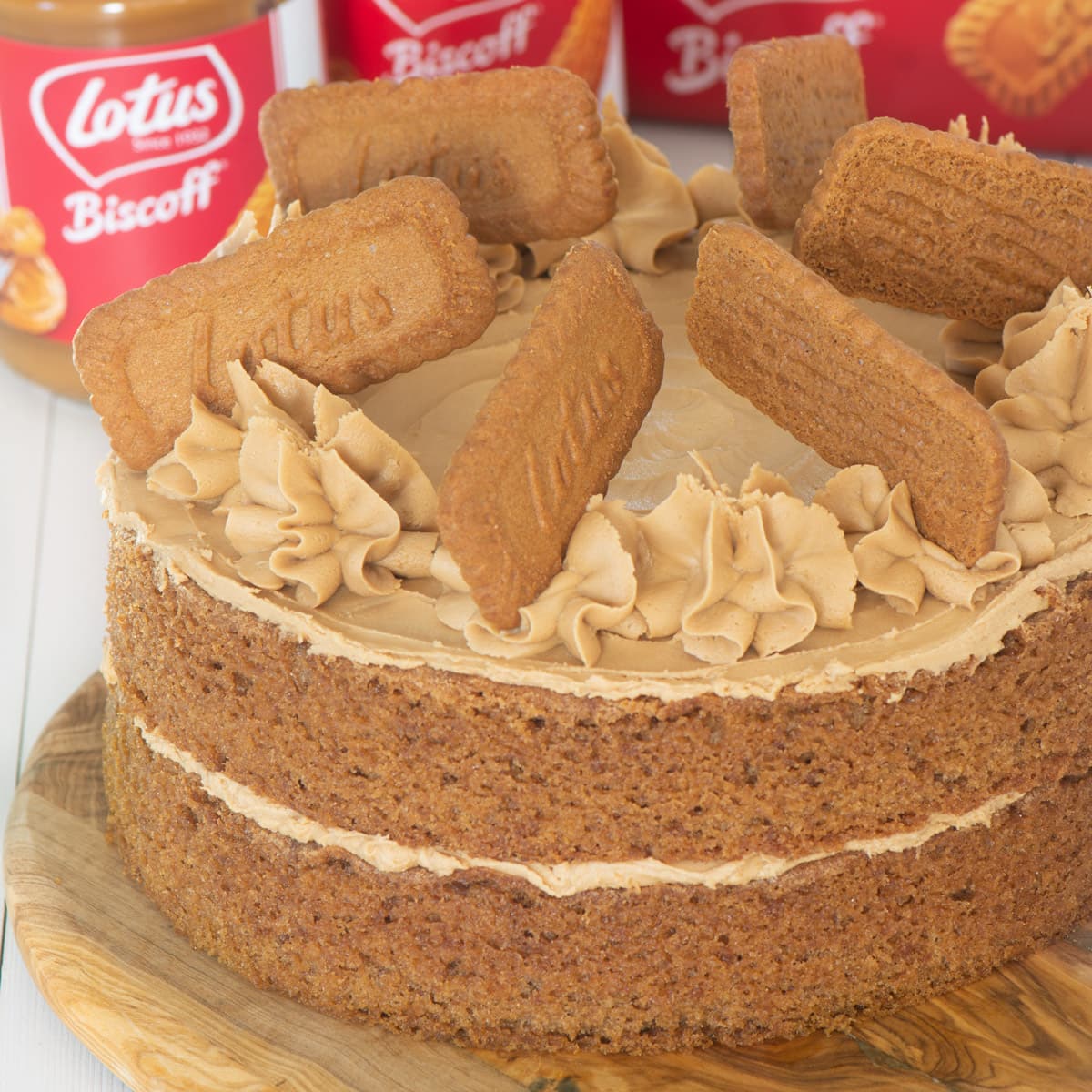
Can this cake be covered in fondant to make a celebration cake?
Yes. This cake works well covered in fondant.
Can this cake be used to make tiers?
Yes, although as it is a light sponge I wouldn’t go above two tiers.
If you want to make tiers, add straws or dowels into the bottom cake to add extra support.
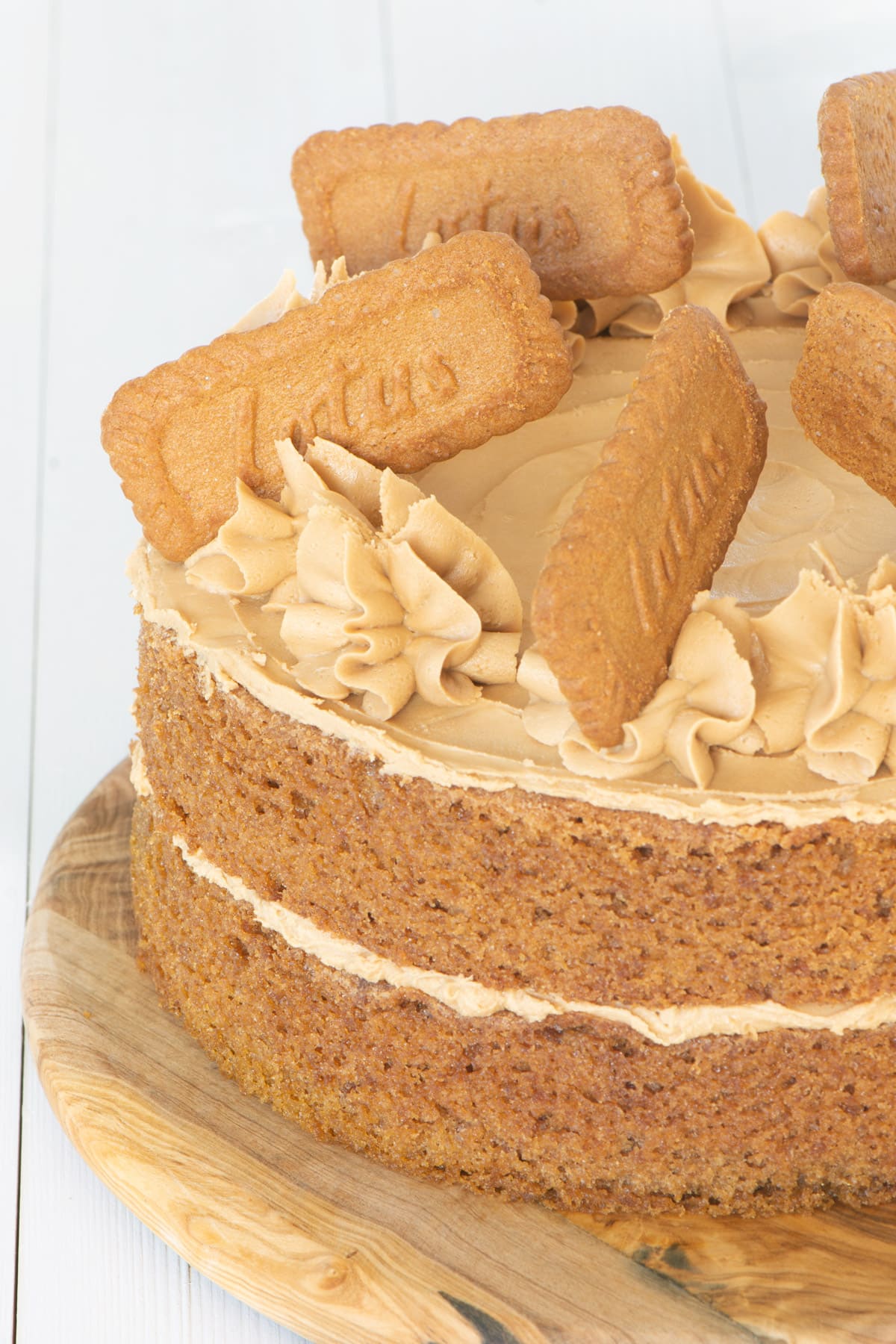
What is this recipe free from? Who is it suitable for?
The ingredients I used to make this recipe are all free from the following allergens. However, please check any labels carefully for allergens you need to avoid as brands can vary, and product recipes can change over time.
- Suitable for Vegetarians
- Tree-Nut Free
- Peanut-Free
- Sesame-Free
- Sulphur Dioxide and Sulphite-Free
- Lupin-Free
FREE GRAMS TO CUPS CONVERSION CHARTS
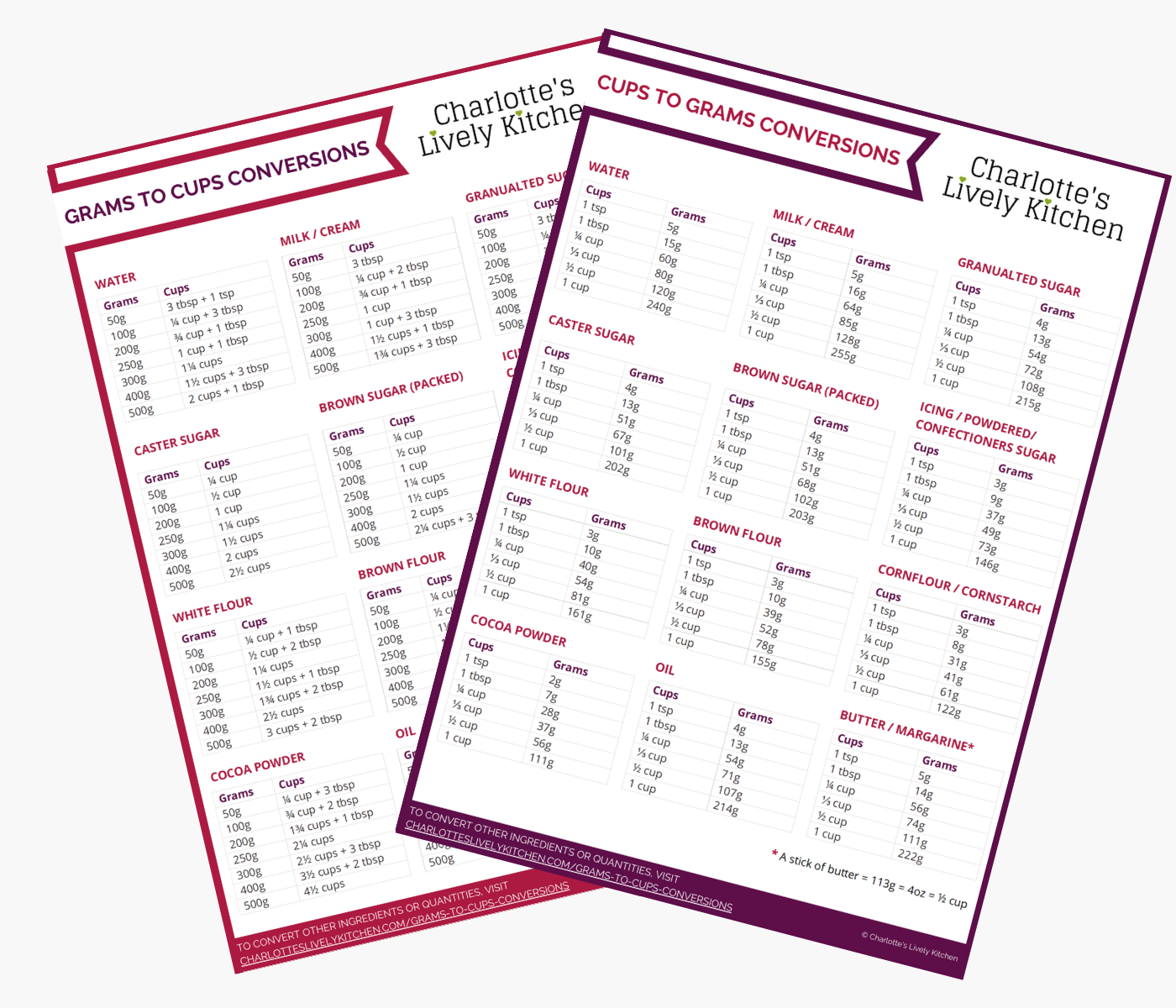
Subscribe to the Charlotte’s Lively Kitchen mailing list to get your FREE printable grams to cups and cups to grams conversion charts for twelve popular baking ingredients
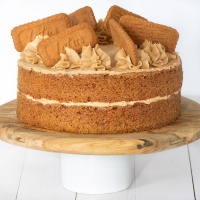
Biscoff Cake
INGREDIENTS
For the sponge
- 140 g soft margarine or butter - if using butter, make sure it's soft and at room temperature
- 120 g soft light brown sugar
- 240 g Lotus Biscoff spread
- 120 g self-raising flour
- 120 g Lotus Biscoff biscuits - c. 16 biscuits
- 4 medium eggs
- 1 tsp baking powder
For the buttercream
- 125 g butter - soft and at room temperature
- 250 g Lotus Biscoff spread
- 185 g icing sugar
- A little milk
To decorate
- 6 Lotus Biscoff biscuits - I only add 6 biscuits as otherwise I think the cake looks overcrowded. However, I keep an extra 6 to one side to give to anyone missing a biscuit on their slice.
INSTRUCTIONS
Make the Biscoff sponge
- Pre-heat your oven to 160°C/140°C fan.
- Line 2x20cm sandwich tins with greaseproof paper or reusble baking liners.
- Crush the Biscoff biscuits (120g) until fine – I use a pestle and mortar, but you could also use a food processer or place the biscuits in a bag and hit them with a rolling pin.
- Place all of the cake ingredients into a large bowl (crushed Biscoff biscuits, 140g soft margarine, 120g soft light brown sugar, 240g Biscoff spread, 120g self-raising flour, 4 medium eggs and 1 tsp baking powder).Mix together, using an electric mixer on a low speed or by hand, until combined.
- Divide the mixture between the two tins and bake for 30-35 minutes until a skewer entered into the middle comes out clean.
- Once baked, remove the cakes from the oven and leave them to cool in their tins for 10 minutes, before removing the tins and cooling completely on a wire rack.
While the cakes are cooling, make the Biscoff buttercream
- Beat together the butter (125g) and Biscoff spread (250g)
- Add the icing sugar (185g), a tablespoon at a time, and beat until combined and smooth.
- Check the consistency of your buttercream, it should be soft and pipeable, but not runny. If it is a little stiff, add milk (no more than one teaspoon at a time). Beat in each addition thoroughly before adding more.
Decorate the cake
- Place a Biscoff sponge on your serving dish. Spread over ⅓ of the buttercream. Add the top layer of sponge and spread over another ⅓ of the buttercream. Finally pipe 12 blobs of buttercream around the edge of the cake (I use a JEM1B nozzle) and top every other blob with a Biscoff biscuit.
NOTES
NUTRITIONAL INFORMATION
Any nutritional information provided is the estimated nutritional information per serving. Please refer to my guide to Charlotte’s Lively Kitchen nutritional information if you would like to learn more about how this is calculated.
What are the ingredients for a different size of tin?
The main recipe is for a two-layer 20cm round cake (this serves 12 people). However, this recipe is easily adapted to use other sizes of round, square or rectangular tins.
To find the ingredients needed to make this cake in a different size, simply add the dimensions of your tin in centimetres and the number of layers into the boxes below and hit “Calculate”. Please make sure you only enter numbers into the boxes. If you add any other characters the calculator won’t work.
For simplicity, The quantities provided for the buttercream below are for simply filling and topping the cake with buttercream (evenly split between the layers and the top). If you choose to decorate your cake in a different style, the amount you need may vary.
I haven’t included the biscuits to decorate in the calculator as you can choose the right number for you depending on how you want your finished cake to look.
Cake Diameter (cm) Number of LayersCake Ingredients
- 0 g self-raising flour
- 0 tsp baking powder
- 0 egg(s)
- 0 g soft margarine or butter
- 0 g soft light brown sugar
- 0 g Biscoff biscuits
- 0 g Biscoff spread
Buttercream Ingredients
- 0 g butter
- 0 g icing sugar
- 0 g Biscoff spread
Cake Ingredients
- 0 g self-raising flour
- 0 tsp baking powder
- 0 egg(s)
- 0 g soft margarine or butter
- 0 g soft light brown sugar
- 0 Biscoff biscuits
- 0 g Biscoff spread
Buttercream Ingredients
- 0 g butter
- 0 g icing sugar
- 0 g Biscoff spread
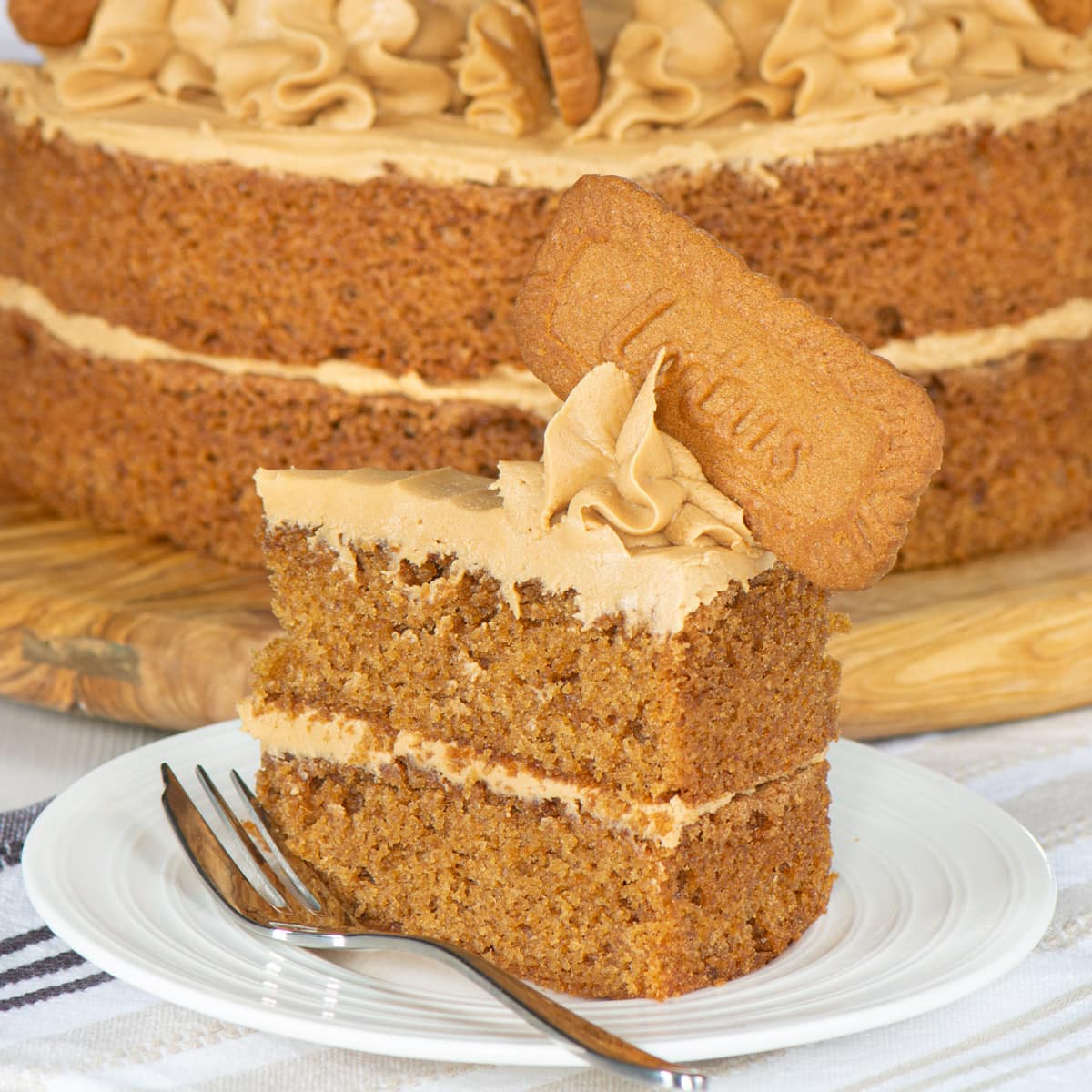


Laura says
Could you use salted butter for both the cake and buttercream?
Charlotte Oates says
Yes you can!
Cathy Stevenson says
Can the butter be substituted to oil and what the amount of oil would be please
Charlotte Oates says
I would not recommend using oil in this cake as the butter provides some of the volume of the cake as well as flavour.
Laura says
This cake turned out great. My son made it for his school baking competition and won. We did slightly reduce the amount of biscoff spread in the cake as we did double the icing so it could cover the sides too with a biscoff crumb decoration
Lisa Howlett says
It seems a lot of spread almost 2 jars is this correct?
Charlotte Oates says
Yes, the recipe quantities are correct – lots of great biscoff flavour does need lots of biscoff!
Sue says
I went wrong somewhere, and I tried hard to follow the instructions correctly – can anyone suggest why my cake – although completely delicious – failed to hardly rise at all. What was the bit I likely got wrong please?
Charlotte Oates says
Without watching you bake and knowing exactly what ingredients you used etc, it is very difficult to tell where things went wrong for you. Some common issues can include under or overbeating the mixture or the self-raising flour and/or baking powder could have lost its potency. I hope you have better luck next time.
Jade says
Made this cake 3 times & each time I was not disappointed, yummy!